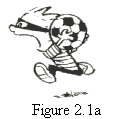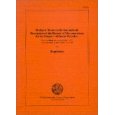The Court of Appeals for the Federal Circuit upheld a lower court ruling that Teva Pharmaceutical Industries Ltd. infringed two patents held by Pfizer Inc. for Celebrex, a non-steroidal anti-inflammatory drug (NSAID) used to treat osteoarthritis and rheumatoid arthritis. Pfizer v. Teva (07-1271).
Pfizer has three patents listed in the FDA’s Orange Book protecting its arthritis drug Celebrex (celecoxib), selective non-steroidal anti-inflammatory drug used to treat pain and inflammation. Pfizer sued Teva in 2004 after the company filed an Abbreviated New Drug Application (ANDA) filing for generic approval with the U.S. Food and Drug Administration. Because the patents covering celecoxib were listed in the Orange Book, Teva was required to certify that those patents were invalid or will not be infringed by the manufacture, use or sale of the new drug. Teva’s ANDA challenged the validity of the patents covering celecoxib.
Last year, the U.S. District Court for the Northern District of New Jersey ruled that all three of Pfizer’s Celebrex patents, U.S. Patent Nos. 5,466,823, 5,563,165, and 5,760,068, were valid and infringed by Teva’s ANDA filing. The district court also held that the asserted claims of the three patents were not invalid for a best mode violation and that the asserted claims of the ’068 patent were not invalid for obviousness-type double patenting. The court stopped Teva from selling its generic drug until until December 2015, when the ‘068 patent expires.
In a split decision, the Court of Appeals for the Federal Circuit held that one of the patents, the ‘068 patent, is invalid for double patenting in view of the earlier filed ‘165 patent.
Pfizer originally filed one patent application covering multiple inventions encompass a broad genus of non-steroidal anti-inflammatory compounds, compositions using those compounds, and methods of using those compositions. The claims of the patents include celecoxib—the active ingredient in Celebrex. During review of the application, the patent the patent examiner issued a restriction requirement, which required an election of the following inventions under 35 U.S.C. §121: <
- Claims 1-20, compounds.
- Claims 21-26, compositions.
- Claims 27-37, methods of use.
In response, Pfizer chose to prosecute the generic compound claims and, within that genus, the single compound species celecoxib. The resulting compound claims ultimately issued as the ’823 patent. Subsequent to the restriction requirement but before the ’594 application issued, Pfizer filed a series of continuation applications claiming priority to the ’594 application and covering the non-elected subject matter which it had elected not to prosecute in the original ’594 application.
In particular, Pfizer filed a divisional application, which ultimately issued as the ’165 patent, that included the restricted-out composition claims, and a continuation-in-part application (“CIP”), which ultimately issued as the ’068 patent, that included the restricted-out method claims.
The issue in this case is that patent law prohibits getting more than one patent on the same invention — that is, you cannot get a second patent if it claims an invention that was disclosed or would have been obvious in light of the first patent. However, there is also a rule that says the first patent can’t be used against the second one if the second one is filed in response to the restriction requirement made in the earlier parent application.
35 U.S.C. § 121 provides a safe harbor to patents that issue on applications filed as a result of a restriction requirement:
A patent issuing on an application with respect to which a requirement for restriction under this section has been made, or on an application filed as a result of such a requirement, shall not be used as a reference either in the Patent and Trademark Office or in the courts against a divisional application or against the original application or any patent issued on either of them, if the divisional application is filed before the issuance of the patent on the other application.
In addition to the express requirements of section 121, the statute requires consonance: the applicant must maintain the line of demarcation between the independent and distinct inventions that prompted the restriction requirement. The court held that this safe harbor applies exclusively to divisional applications since a divisional application contains an identical disclosure to its parent application. This consonance requirement prevents an applicant from amending the claims in the divisional application in a way that would violate the originally imposed restriction requirement and thereby impermissibly extend the patent term as to that subject matter.
In the present case, Pfizer had filed a continuation-in-part application, which includes some portion of the original application but also introduces new matter. Teva argued that section 121 applies exclusively to divisional applications, and that because the ’068 patent issued on a CIP rather than on a divisional application, it does not fall within the terms of the statute.
Pfizer tried arguing that the terminology of the application did not matter but the appeals court pooh-poohed it:
There is no suggestion, however, in the legislative history of section 121 that the safe-harbor provision was, or needed to be, directed at anything but divisional applications. The commentary and materials published since section 121’s enactment similarly contain no suggestion that section 121 was meant to cover any applications other than divisionals. Although the legislative history reveals no reason why Congress drafted section 121 only to benefit divisional applications, there are certainly plausible reasons why Congress would have concluded that section 121 should be limited to divisional applications, and not include CIPs. The need for the protection only existed when a divisional application was filed as a result of the restriction.
Because the second application then was without the safe harbor, the court held that it was invalid for obviousness-type double patenting, a judicially created doctrine that prohibits someone from obtaining an extension of their patent rights by filing a later patent that are not patentably distinct from the first. The Appeals Court ruled in Teva’s favor that the patent covering the use in the treatment of inflammation was invalid.
The court ruled that two other patents covering the active ingredient in Celebrex are valid, enforceable and infringed by the Teva’s product. The decision will keep Teva from selling a generic counterpart in the U.S. until May 2014.
It is obviously good news for Pfizer tht they did not lose all of the patents, given that it is one of its biggest sellers with global sales of Celebrex totalling $2.3 billion a year, including $1.7 billion in the U.S. alone. However, the decision will cut Pfizer’s patent term by one and a half years.

 The
The  ), is the symbol for the ratio of the circumference of a circle to its diameter. Pi =
), is the symbol for the ratio of the circumference of a circle to its diameter. Pi =  What happens when a brand name drug company asserts that a patent covers its drug and then pulls it out from the Orange Book? You fight to get it back in, that’s what.
What happens when a brand name drug company asserts that a patent covers its drug and then pulls it out from the Orange Book? You fight to get it back in, that’s what. The U.S. Patent and Trademark Office (USPTO) has proposed making changes to the rules regarding when an invention involves biological material. Often, these can’t be adequately described using just words.
The U.S. Patent and Trademark Office (USPTO) has proposed making changes to the rules regarding when an invention involves biological material. Often, these can’t be adequately described using just words.